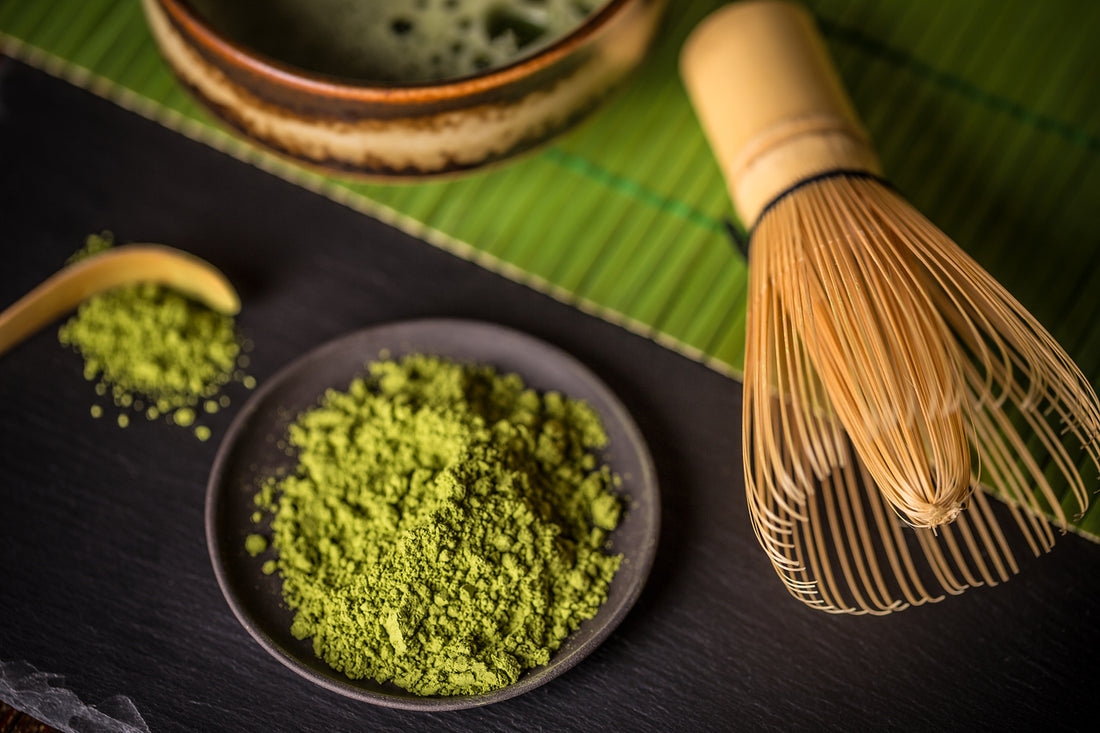Welcome to the World of Matcha
Matcha, a powdered green tea native to Japan, has taken the world by storm, earning a prominent place on the menu in many cafes and tea shops around the globe. It's lauded for its vibrant color, creamy texture, and a complex taste profile that teeters between sweet and umami. However, the process of making this green elixir is an art form in itself, steeped in tradition and requiring meticulous precision. Today, Divine Ingredients takes us on a journey from the tea fields of Japan to the tea cups in our homes, tracing the intricate steps that bring us the exquisite delight known as matcha.
Cultivation and Harvesting: The Birth of Matcha
In the heart of Japan's tea-growing regions, such as Uji in Kyoto or Aichi in the Chūbu region, the process of crafting premium matcha begins. The tea plants dedicated to matcha production are specifically the Camellia sinensis var. sinensis, a variety known for its smaller, more flavor-concentrated leaves. What sets the cultivation of these plants apart is the technique known as "shading." About 20-30 days before harvest, the tea bushes are covered with a structure made from bamboo and straw, or in more modern practices, black mesh or tarp, reducing the amount of sunlight that reaches the leaves. This process increases chlorophyll production, leading to a darker green color and a boost in amino acids, especially L-theanine, which gives matcha its signature rich umami flavor.
Processing: The Making of Artisanal Matcha
When the tea leaves are ready for harvesting, usually in early May, they are handpicked with great care. Only the top two leaves and bud (the "flush") are plucked, as they have the highest concentration of flavor and nutrients. This is an incredibly labor-intensive process, but it ensures that only the finest leaves make it into artisanal matcha production, the quality Divine Ingredients is renowned for.
Grinding: Turning Tencha into Japanese Matcha
Once the leaves are harvested, they are quickly steamed to halt the enzymatic activity, a process that prevents oxidation and preserves the vibrant green color and the nutrients within the leaves. Then, they are air-dried, followed by a more intense drying process called 'tencha roasting.' The dried tea leaves, now called 'tencha', are carefully sorted for stems and veins, leaving only the leaf's flesh, which is the richest in flavor and nutrient content. The tencha is ground into a fine powder using large granite stone mills, a slow and delicate process that ensures the leaves aren't heated by friction, which could alter the taste and aroma. It takes up to an hour to grind just 30 grams of Japanese matcha – the amount typically used in a traditional tea ceremony.
Preparation: The Art of Brewing Traditional Matcha
The resultant product is a fine, bright green powder known as matcha, which means 'ground tea' in Japanese. The matcha is then packed into tins, ensuring minimal exposure to light and air to preserve its freshness and potent flavor. The final part of our journey takes us to the art of preparing traditional matcha for drinking. Unlike other teas, matcha isn't steeped but whisked into hot water. This process begins by sifting a small amount of the matcha powder (usually about two bamboo scoops or a half teaspoon) into a chawan (tea bowl). Then, hot water – not boiling, but around 70-85 degrees Celsius – is added. The matcha and hot water are then briskly whisked using a chasen (bamboo whisk) until the tea is frothy. The whisking technique and the high-quality powdered tea create the rich, velvety texture that matcha is known for.
The Beauty of Matcha and Divine Ingredients
Sipping matcha is more than just enjoying a hot beverage – it's an experience that connects us to a centuries-old tradition, offering a moment of calm in our hectic lives. From the tea farmers in Japan who devote their lives to cultivating the best tea plants, to the skilled hands that pick, process, and grind the leaves, to the ritualistic preparation in our own homes, every step is a testament to the craftsmanship and the cultural significance of this remarkable drink.
In the end, matcha is not just tea. It's a symbol of Japanese culture, a piece of history, a healthy elixir, and a testament to the beauty that lies in the process as much as in the product. Divine Ingredients is proud to be a part of this tradition, bringing authentic, high-quality matcha from the tea fields of Japan to your cup. The next time you take a sip of matcha, you'll appreciate not only its distinct taste but also the dedication, artistry, and tradition that's gone into every granule of the vibrant green powder. Enjoying matcha becomes a multi-sensory experience that stretches far beyond the palate and into the heart of Japan's rich cultural heritage.

